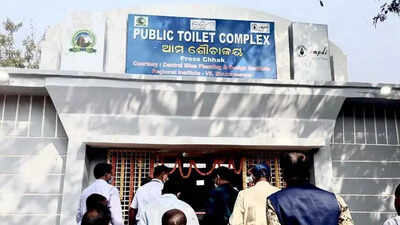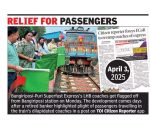BMC plans to build 20 more public toilets | Bhubaneswar News

Bhubaneswar: The Bhubaneswar Municipal Corporation (BMC) has planned to construct 20 more public toilets to ensure easy access to sanitation facilities for the floating population while putting an end to open urination. It is part of the civic body’s broader mission to enhance public amenities and maintain cleanliness and provide saturation coverage of toilets, BMC officials said. At present, there are 97 public toilets in the city.
New toilets of different sizes will be constructed at XIMB Square, near the regional transport office at Chandrasekharpur, Sai Temple, ATM Square at Niladri Vihar, DAV School at Chandrasekharpur, BDA market complex, Gandamunda haat, Jagannath Temple, Capital Ford Square, Madhusudan Park, Vani Vihar along NH-16, Satya Nagar, Census office, Ramadevi Women’s University, water tax office, Rasulgarh truck parking, Pahala sweet market, Aiginia potato godown, Badagada and Laxmi Sagar.
“For each toilet, a separate estimate has been done. Altogether, around Rs 3 crore will be spent for the project. Locations of the new toilets have been earmarked considering the local demand and needs of the floating population. A survey was conducted earlier to find suitable land for the project,” said BMC assistant commissioner N Ganesh Babu.
Besides, BMC data revealed that at least 33 public toilets require major repair work, while 26 need minor renovation. Eight toilets will have to be demolished as they are completely dilapidated and beyond repair. “Out of 97 public toilets, the highest 39 are located in the south-east zone. Many existing public toilets have been identified for a facelift in terms of look and other exterior design,” Babu added.
The civic body also plans to construct three loo toilets in each of the 67 wards to improve sanitation and stop open defecation. These toilets are being constructed from BMC’s own funds and are separate from the public toilets that have only urinals. They are constructed and maintained by Sulabh International Social Service Organisation (SISSO).
BMC officials said the loo toilets will cater to the needs of outstation people, who otherwise find it difficult to find such facilities in the wards. Most of the public toilets are constructed at vantage points and along the arteries. The loo toilets will compensate for the need.
Public toilets in the city are mostly maintained by SISSO, and each toilet is cleaned four times a day by the agency. Community toilets are maintained by the ward sanitation committee of a particular locality. However, BMC is yet to decide on how cleaning of the proposed loo toilets will be taken up.
















